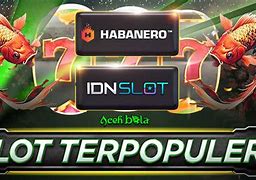
Clinical significance
Outies are sometimes mistaken for umbilical hernias; however, they are a completely different shape with no health concern, unlike an umbilical hernia. The navel (specifically abdominal wall) would be considered an umbilical hernia if the protrusion were 5 centimeters or more. The diameter of an umbilical hernia is usually 1/2-inch or more.[9] Navels that are concave are nicknamed "innies".[10] While the shape of the human navel may be affected by long term changes to diet and exercise, unexpected change in shape may be the result of ascites.[11]
In addition to change in shape being a possible side effect from ascites and umbilical hernias, the navel can be involved in umbilical sinus or fistula, which in rare cases can lead to menstrual or fecal discharge from the navel. Menstrual discharge from the umbilicus is a rare disorder associated with umbilical endometriosis.[12][13]
To minimize scarring, the navel is a recommended site of incision for various surgeries, including transgastric appendicectomy,[16] gall bladder surgery,[17] and the umbilicoplasty[18] procedure itself.
All placental mammals have a navel, although it is generally more conspicuous in humans.[19]
Fashion, society and culture
The public exposure of the male and female midriff and bare navel was considered taboo at times in the past in Western cultures, being considered immodest or indecent. Female navel exposure was banned in some jurisdictions, but community perceptions have changed to this now being acceptable.[20] The crop top is a shirt that often exposes the belly button and has become more common among young people.[21] Exposure of the male navel has rarely been stigmatised and has become particularly popular in recent years, due to the strong resurgence of the male crop top and male navel piercing.[22] The navel and midriff are often also displayed in bikinis, or when low-rise pants are worn.
While the West was relatively resistant to navel-baring clothing until the 1980s, it has long been a fashion with Indian women,[23] often displayed with saris or lehengas.
The Japanese have long had a special regard for the navel. During the early Jōmon period in northern Japan, three small balls indicating the breasts and navel were pasted onto flat clay objects to represent the female body. The navel was exaggerated in size, informed by the belief that the navel symbolized the center where life began.[24]
In Arabic-Levantine culture, belly dancing is a popular art form that consists of dance movements focused on the torso and navel.[25]
Buddhism and Hinduism refer to the chakra of the navel as the manipura. In qigong, the navel is seen as the main energy centre, or dantian. In Hinduism, the Kundalini energy is sometimes described as being located at the navel.
Buah Jeruk Sunkist Navel merupakan jeruk pilihan kualitas terbaik. Warna kulit Orange dan pulir jeruk warna orange juga. Mengandung vitamin C tinggi dan bisa konsumsi langsung ataupun untuk jus. Buah Jeruk Sunkist Navel mengandung: Serat, Zat Besi, Potasium, Kalsium, Thiamin Vitamin C Manfaat Buah Jeruk Sunkist Navel: Menjaga kesehatan jantung Meningkatkan sistem kekebalan tubuh Melancarkan pencernaan Mengatasi batu ginjal Mencegah anemia
Definisi Terperinci: Navel merujuk kepada pusat perut seseorang di mana tali pusat terhubung semasa dalam kandungan. Dalam istilah perubatan, ia dikenali sebagai umbilicus. Navel juga dapat merujuk kepada titik pusat pada sesuatu, misalnya, “navel of the universe” untuk menggambarkan pusat kosmos atau punca segala sesuatu.
Etimologi: Perkataan “navel” berasal dari bahasa Inggeris Kuno “nafela,” yang berasal daripada bahasa Jermanik purba *nabelaz, yang berkait dengan bahasa Latin “umbilicus” dan Yunani “omphalos.”
Sebutkan: Navel diucapkan sebagai /ˈneɪ.vəl/.
The doctor examined the patient’s navel for any signs of infection. Doktor memeriksa pusat pesakit untuk sebarang tanda jangkitan.
She has a small tattoo just above her navel. Dia mempunyai tatu kecil tepat di atas pusatnya.
The baby’s navel will heal within a few weeks after birth. Pusat bayi akan sembuh dalam beberapa minggu selepas kelahiran.
He pointed to his navel to illustrate the location of his pain. Dia menunjuk ke arah pusatnya untuk menggambarkan lokasi kesakitannya.
The fashion model wore a crop top that exposed her navel. Model fesyen itu memakai kemeja crop yang mendedahkan pusatnya.
Dari Wikikamus bahasa Indonesia, kamus bebas
jeruk navel merupakan jeruk unik yang memiliki 3 skat atau kamar di dalamnya.jenis jeruk initersebut di budidayakan terutama di daerah brasil,california,arizona dan florida.dan jeruk ini merupakan buah yang kaya dengan vitamin c.
In some cultures, the navel is considered a sacred symbol representing the connection between mother and child.
In some cultures, the navel is considered a symbol of fertility and is adorned with decorative jewelry.
The surgeon made a small incision just below the navel to access the abdominal cavity.
The newborn baby still had its umbilical cord attached to its navel.
She wore a crop top that revealed a small, delicate navel piercing.
Dari Wikipedia bahasa Indonesia, ensiklopedia bebas
Navel (ネーブル, Nēburu) adalah perusahaan produksi game hentai di Jepang. Nama perusahaan diambil dari nama sejenis jeruk (jeruk Navel). Dua pengarang Jepang yang bekerja pada perusahaan ini adalah Aoi Nishimata dan Hiro Suzuhira (sudah keluar 2007 kemarin). Pada tanggal 27 April 2008 nanti akan ada Navel Live 2008 in Tokyo. Dalam gambar promo Navel Live tersebut, ada gambar seorang maskot Navel yang ketiga, dengan warna rambut merah muda dan warna mata ungu.
Game ini telah diadaptasi ke dalam PS2 oleh Kadokawa.
Game ini telah diadaptasi ke dalam Nintendo DS oleh Kadokawa dengan Judul RiariaDS.
Versi Soul Link yang skenarionya dirombak, menambahkan dua heroine baru.
Sequel dari Oretachi ni Tsubasa wa Nai.
Lime adalah anak perusahaan Navel yang berdiri tahun 2006, dan merupakan "adik perempuan" Navel.
Scarred area on the abdomen after detachment of the umbilical cord
The navel (clinically known as the umbilicus; pl.: umbilici or umbilicuses; commonly known as the belly button or tummy button) is a protruding, flat, or hollowed area on the abdomen at the attachment site of the umbilical cord.[1]
The umbilicus is used to visually separate the abdomen into quadrants.[2]
The umbilicus is a prominent scar on the abdomen, with its position being relatively consistent among humans. The skin around the waist at the level of the umbilicus is supplied by the tenth thoracic spinal nerve (T10 dermatome). The umbilicus itself typically lies at a vertical level corresponding to the junction between the L3 and L4 vertebrae,[3] with a normal variation among people between the L3 and L5 vertebrae.[4]
Parts of the adult navel include the "umbilical cord remnant" or "umbilical tip", which is the often protruding scar left by the detachment of the umbilical cord. This is located in the center of the navel, sometimes described as the belly button. Around the cord remnant is the "umbilical collar", formed by the dense fibrous umbilical ring. Surrounding the umbilical collar is the periumbilical skin. Directly behind the navel is a thick fibrous cord formed from the umbilical cord, called the urachus, which originates from the bladder.[5]
The belly button is unique to each individual due to it being a scar, and various general forms have been classified by medical practitioners.[6][7][further explanation needed]



